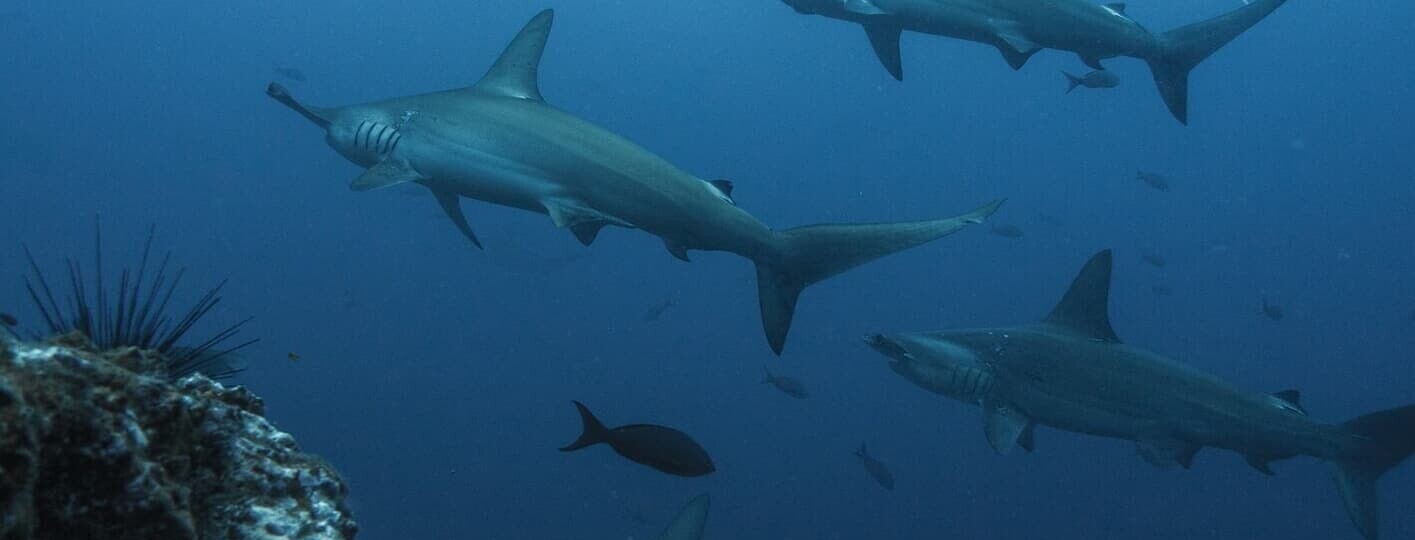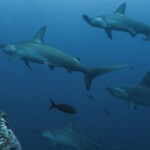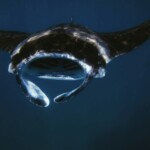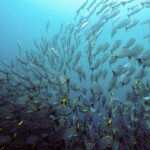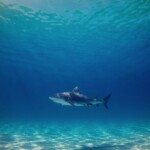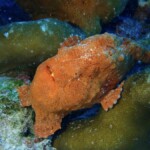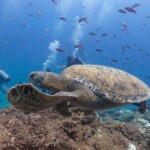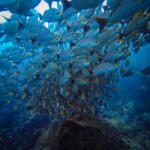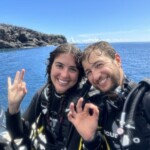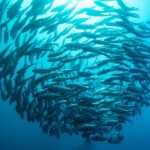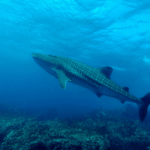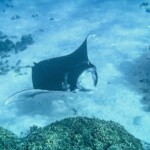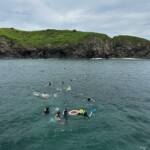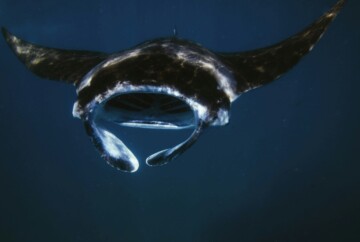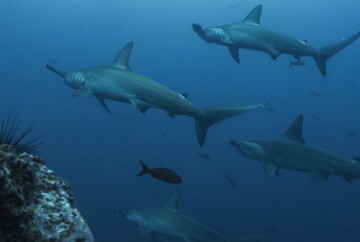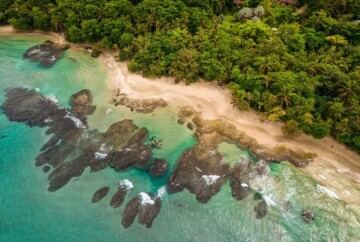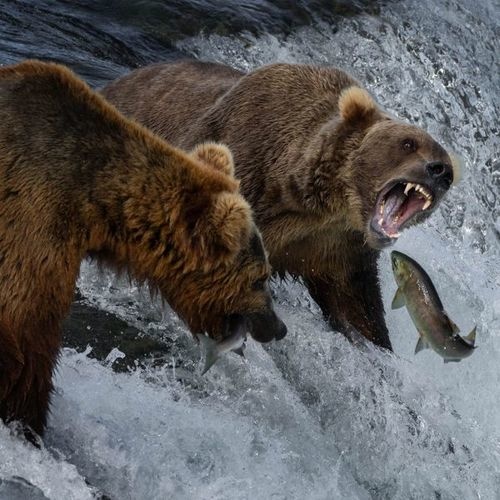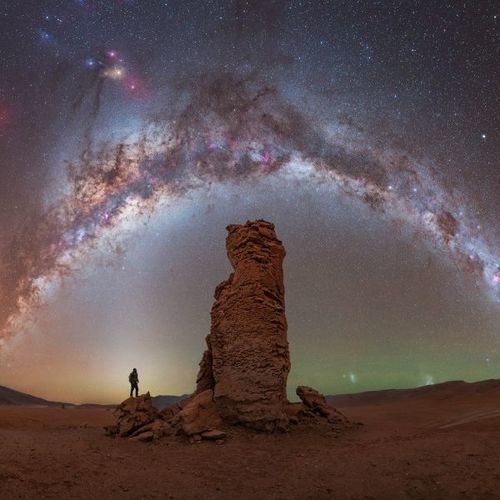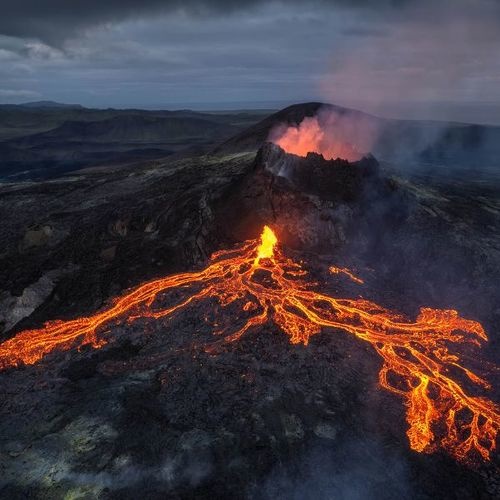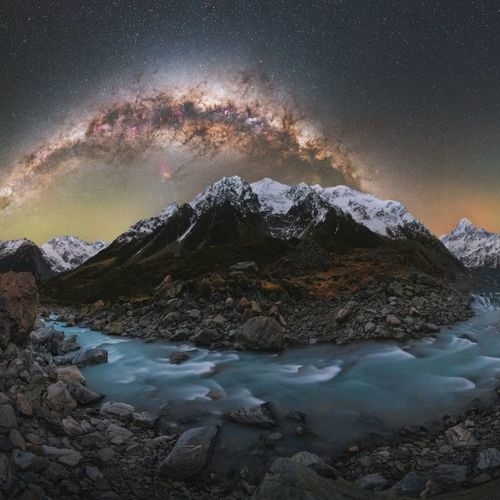If you’re planning your next underwater adventure, grab your fins, because scuba diving in Costa Rica is an experience you don’t want to miss. This beautiful country is home to about 5% of the planet’s biodiversity, and a huge part of it is hidden beneath the waves. For ocean lovers, exploring this incredible underwater world is simply essential.
Sure, there are many must-see attractions in Costa Rica on land, but its coastlines are where the magic truly begins. You’ll find colorful coral reefs, thriving marine life, and species you won’t see anywhere else. Whether you’re a beginner or already an experienced diver, Costa Rica offers the chance to encounter sharks, majestic oceanic manta rays, and massive schools of fish that will leave you in awe.
Before our very first trip, we started researching the healthiest coral reefs and best dive sites in Costa Rica. Over time, we explored many incredible places, but nothing compared to our liveaboard trip to Cocos Island. That was a once-in-a-lifetime adventure we’ll never forget.
In the sections below, I’ll share everything you need to go scuba diving in Costa Rica. From the best destinations and the ideal time to visit, to what you can expect underwater, this guide has you covered. Ready to dive in?
Guide to diving in Costa Rica
When I first started researching scuba diving in Costa Rica, I wished there had been one clear, practical guide like this one to walk me through everything. So, here it is for you! You’ll find details on:
- Best diving spots in Costa Rica
- Map of the best dive sites in Costa Rica
- Get your PADI Open Water certification in Costa Rica
- Diving in Costa Rica for non-certified divers
- Best time to dive in Costa Rica
- Additional tips for diving in Costa Rica
- Best snorkeling spots in Costa Rica
Best places to dive in Costa Rica
Costa Rica has no shortage of places to slip beneath the surface and discover an entirely new world, but not every spot offers the same experience. Which destination you choose really depends on what kind of diving you’re after. What is clear, though, is that the very best dive sites in Costa Rica are almost all located along the Pacific Coast.
In the next few sections, I’ll walk you through the top dive centers in Costa Rica. Be warned: by the time you finish reading, you might find yourself wanting to explore every single one of them!
Diving in the Catalina Islands, Costa Rica
Set in the Pacific Ocean and just a short distance from some of Guanacaste’s most famous beaches, the Catalina Islands are among the best places to dive in Costa Rica. Located only about 8 miles from Playa Flamingo, this small volcanic archipelago has become a favorite for divers worldwide thanks to its incredible marine life and inviting waters.
What makes the Catalinas truly unforgettable is the chance to dive with giant oceanic manta rays all year long. While November through May is usually considered the peak season, sightings are possible anytime. To put it into perspective, these mantas can span up to 23 feet across and weigh nearly 2,900 pounds. Sharing the water with such majestic creatures is nothing short of awe-inspiring.
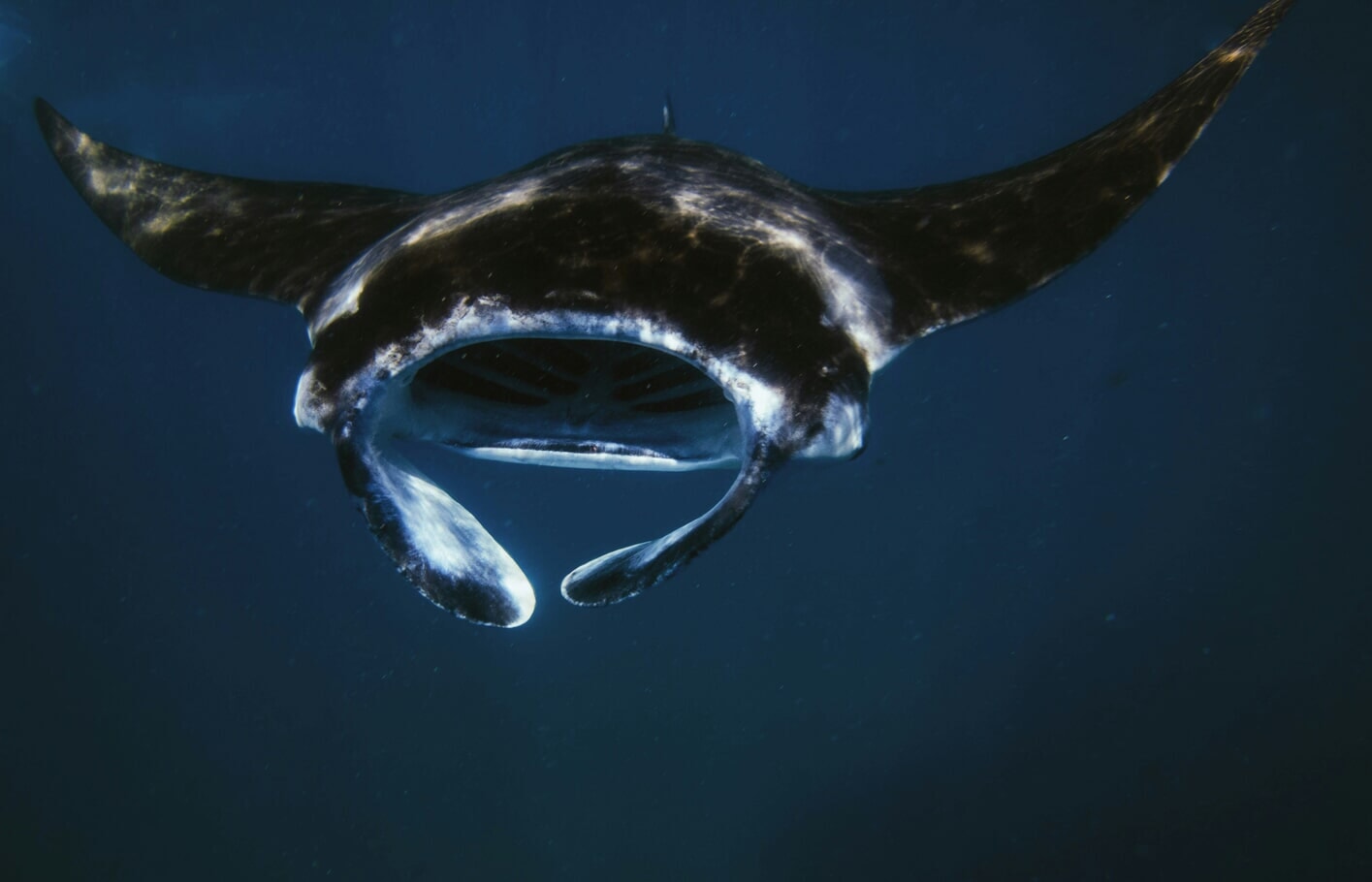
Diving in the Catalina Islands, Costa Rica
The strong ocean currents here also bring in an amazing variety of species, which means every dive offers the chance to discover something new. You might come across sea turtles, eagle rays, moray eels, reef sharks, pufferfish, and huge schools of tropical fish.
To explore the Catalina Islands, you’ll need at least an Open Water Diver certification. If you have an Advanced certification, even better, since it makes handling currents much more comfortable. I also recommend checking out our detailed guide to the Catalina Islands before your trip, so you’ll know exactly what to expect once you’re underwater.
- Best time: January through March, during the dry season, is the prime time to spot oceanic manta rays. While the waters are colder and currents stronger at this time, these conditions attract the largest pelagic species. If visibility is your top priority, September to November, just after the rainy season, tends to be the clearest. From May to December, the chance of seeing manta rays is lower, but the conditions are calmer, which is great for divers with less experience.
- Visibility: About 20 to 60 feet.
- Water temperature: Typically between 65°F and 80°F, with thermoclines dropping as low as 60°F.
- Difficulty: Ranges from easy to challenging depending on the specific dive site, since some have stronger currents.
- Depth: 40 to 120 feet.
- Common species: Oceanic manta rays, whitetip reef sharks, stingrays, sea turtles, eels, lobsters, and octopuses.
Diving in the Caño Island Biological Reserve
The Caño Island Biological Reserve is without question one of Costa Rica’s most exotic and breathtaking destinations. If I had to rank my favorites, this incredible spot would easily make the top three. The island is surrounded by vibrant coral reefs and packed with marine life that’s hard to find anywhere else in the country.
Because it’s a protected reserve located off the coast of Drake Bay, daily access is strictly limited, so it’s essential to book in advance. You’ll also need a special permit, which is usually taken care of by your dive center. The permit fee is $17 per person, though it’s already included in the cost of dive excursions.
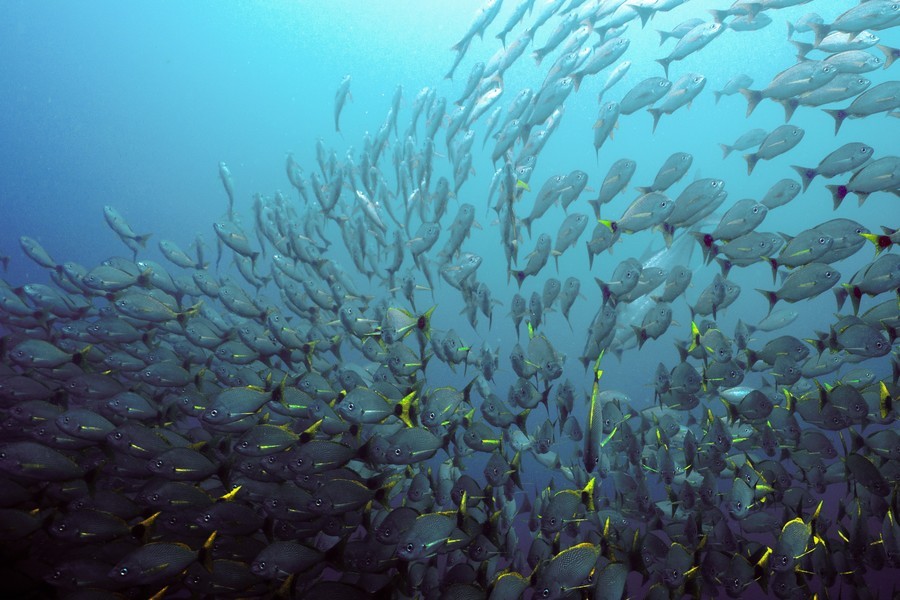
Diving in the Caño Island Biological Reserve
One of the best things about Caño Island is that you don’t need to be a highly experienced diver to enjoy it fully. The dive sites here are not very deep, and the reserve is known for offering the clearest waters in all of Costa Rica. Having an Open Water certification is more than enough to explore comfortably.
Underwater, you’ll find some of the most fascinating animal species in Costa Rica, including dolphins, bull sharks, whitetip reef sharks, eels, sea turtles, and occasionally even oceanic manta rays. If you dive during Costa Rica’s whale-watching season, you might be lucky enough to hear the haunting songs of humpback whales echoing through the water. Add to that the dramatic walls, caves, and striking seascapes, and the whole place feels like an underwater paradise.
And there’s even more. History enthusiasts will appreciate knowing that the island was once inhabited by different pre-Columbian civilizations between 700 and 1500 BC. Archaeologists have uncovered fascinating artifacts here, adding a cultural layer to a destination already rich in natural beauty.
- Best time: Year-round. From January to April, the waters are calmest and visibility is at its best. Between July and October, you have the highest chances of seeing humpback whales.
- Visibility: 40 to 80 feet.
- Water temperature: Typically ranges between 70°F and 85°F, though cold thermoclines can bring it down to 60°F. A wetsuit of at least 3 mm is always recommended.
- Difficulty: Moderate, depending on the site.
- Depth: 35 and 100 feet.
- Common species: Whitetip reef sharks, manta rays, sea turtles, eels, lobsters, seahorses, and octopuses. From July to October, humpback whales also visit these waters.
Diving in the Bat Islands, Costa Rica
If you’re looking for a true underwater thrill, the Bat Islands, also called the Islas Murciélago, deliver an experience unlike anything else in the world. Found within Santa Rosa National Park in the northern part of Guanacaste, these islands are famous for offering encounters with bull sharks, making them one of the best diving sites on Costa Rica’s Pacific coast.
At first, the idea of diving with bull sharks might feel intimidating, but the reality is that these dives are considered quite safe. The sharks usually keep their distance from divers. Scientists still don’t know exactly why these sharks are so drawn to these waters, and as with all of nature, sightings are never guaranteed. But when you do encounter them, it’s unforgettable. Bull sharks here can grow up to nearly 15 feet long, and being in the water with these giants is nothing short of breathtaking.
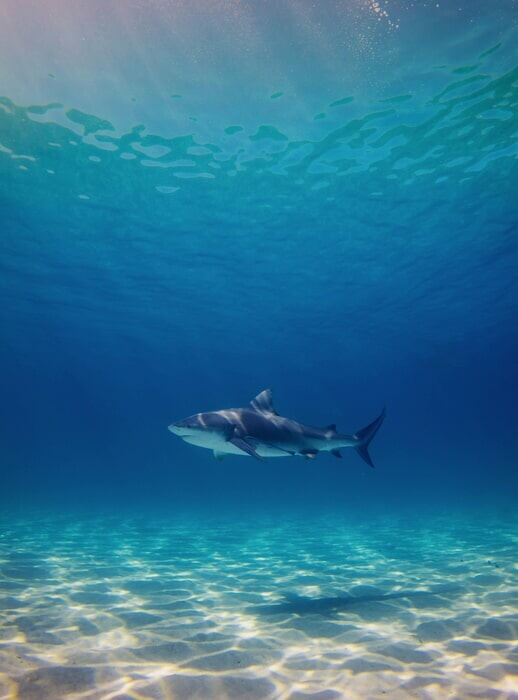
Diving in the Bat Islands, Costa Rica
You can also see giant Pacific manta rays, dolphins, sea turtles, large schools of eagle rays, as well as grunts, snappers, barracudas, and many other species. The biodiversity is stunning.
Because the currents around the Bat Islands are strong, divers must have at least an Advanced Open Water certification. These same currents bring in huge amounts of nutrients, which in turn attract marine life and encourage the growth of vibrant corals. Many dive sites here reach depths of up to 100 feet, which makes them unsuitable for those with only a basic Open Water certification. For those who are qualified, though, the Bat Islands are an extraordinary adventure that will stay with you long after the dive is over.
- Best time: June through October is considered the best window for diving here. Conditions are safer during these months, though strong currents mean dives remain challenging.
- Visibility: Around 25 to 100 feet.
- Water temperature: Typically ranges from 70°F to 85°F, but cold thermoclines can drop temperatures to around 60°F. A wetsuit of at least 3 mm is always advised.
- Difficulty: Moderate overall, but strong currents are common.
- Depth: Between 60 and 130 feet.
- Common species: Bull sharks, giant manta rays, eagle rays, barracudas, grunts, snappers, pufferfish, angelfish, butterflyfish, goliath grouper, moray eels, octopuses, sea turtles, sailfish, wahoo, and mahimahi.
Diving in the Gulf of Papagayo
The Gulf of Papagayo is one of the best choices for divers who don’t have much experience or simply prefer a calmer underwater adventure compared to the Catalina Islands or the Bat Islands.
Because this area is free of strong currents, it’s an ideal diving spot in Costa Rica for beginners. Even though the dive sites are located close to the coast, visibility is surprisingly good, and the water is often warmer and more pleasant than in other parts of Costa Rica.
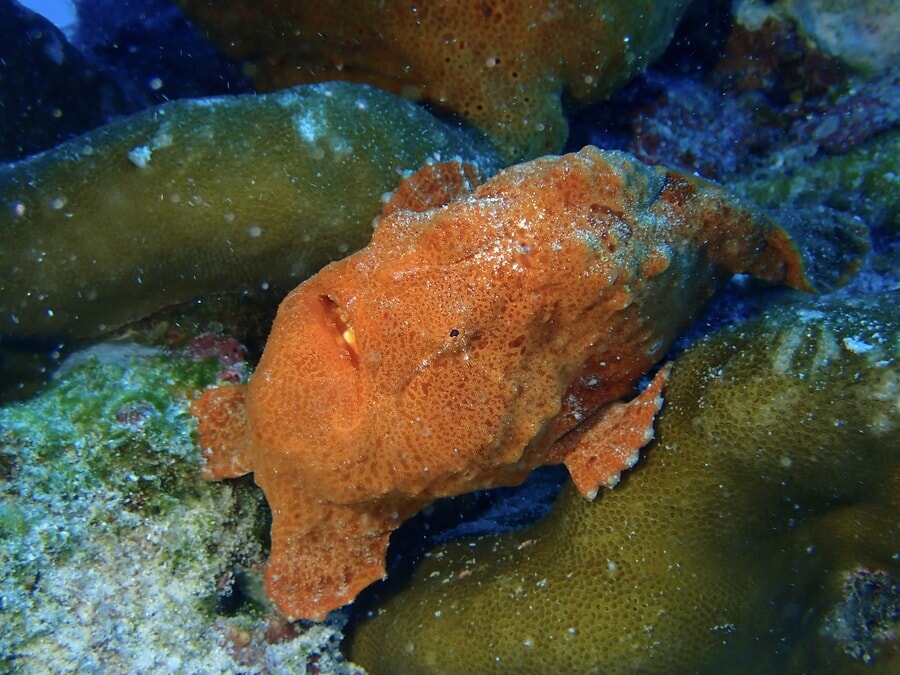
Diving in the Gulf of Papagayo
Playa del Coco is the main hub for diving centers in the Gulf of Papagayo, although nearby Playa Hermosa also offers some options.
Below the surface, divers can explore volcanic formations such as arches, caverns, and tunnels, as well as a couple of shipwrecks. While this region is not especially famous for its coral reefs, it makes up for it with pelagic species that drift in when the Papagayo winds blow, filling the waters with nutrients. Marine life commonly seen here include whiprays, whitetip reef sharks, large schools of fish, and snappers.
- Best time: From December to April, during the dry season, the famous Papagayo winds stir up stronger currents and bring cooler waters, but these same conditions attract pelagic species, making it a rewarding season for more adventurous divers. From May to November, the sea generally calms down, the waters become warmer, and biodiversity flourishes, making this period ideal for beginners or those looking for a more relaxed experience.
- Visibility: Around 25 to 50 feet.
- Water temperature: Typically ranges from 70°F to 85°F.
- Difficulty: Easy overall, which makes it perfect for those who are not yet ready to tackle more challenging places like the Catalina Islands or the Bat Islands.
- Depth: Between 35 and 100 feet.
- Common species: Whitetip reef sharks, turtles, lobsters, seahorses, octopuses, manta rays (seen most often from January to May), pufferfish, moray eels, and sea urchins.
Diving in Cocos Island, Costa Rica
Located about 300 miles off the mainland, Cocos Island is one of the world’s most legendary diving destinations, often nicknamed “the little Galapagos.” This volcanic island hides a treasure trove of underwater wonders, from dramatic rock formations to thriving marine life led by massive schools of hammerhead sharks.
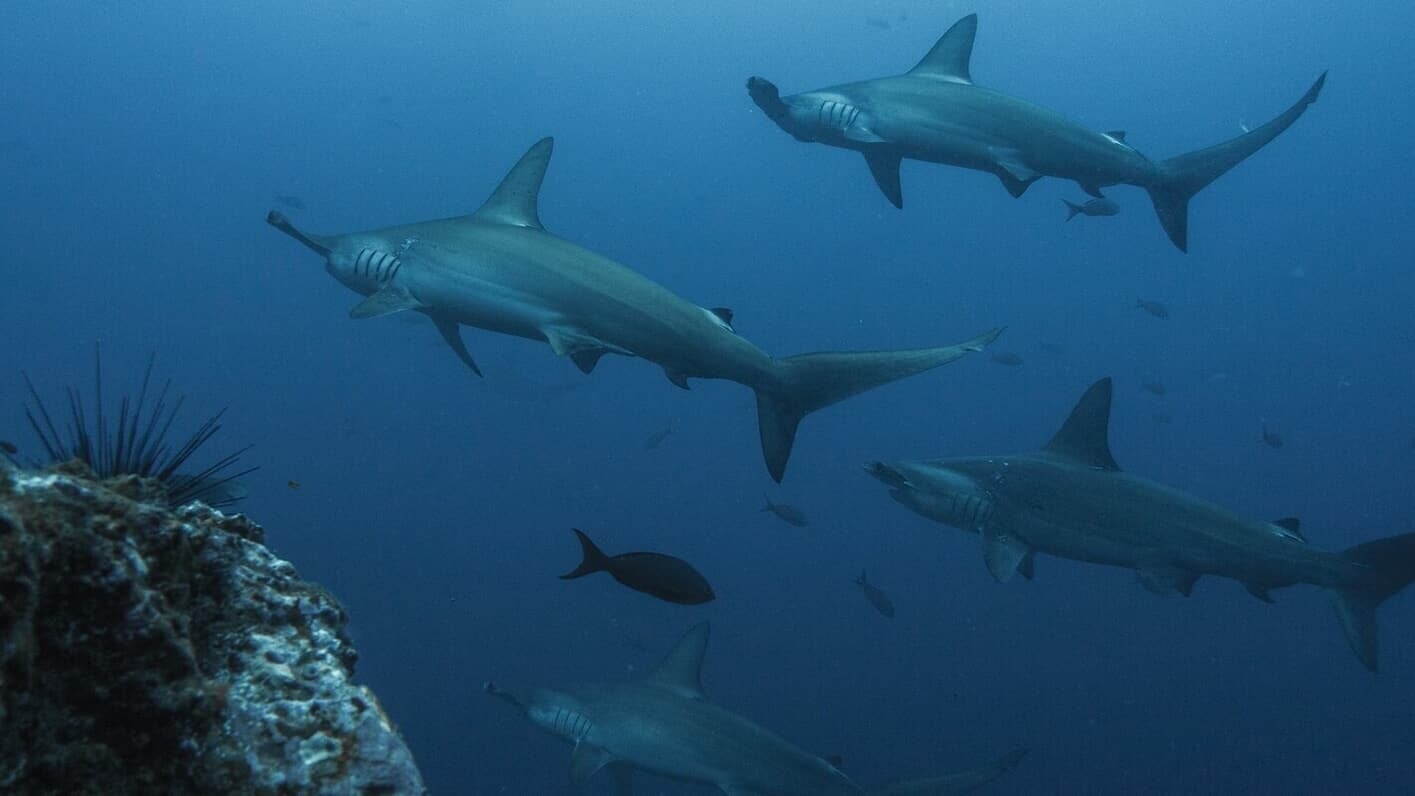
Diving in Cocos Island, Costa Rica
Because it is so remote, diving here feels like a once-in-a-lifetime adventure. Many species are endemic, found only in these waters. Reaching the island takes almost two full days by boat, and since overnight stays on the island itself are not allowed, the only way to dive here is by liveaboard trips that usually last about 10 days.
In addition to the iconic hammerhead sharks, you’ll find whitetip sharks, tiger sharks, red-lipped batfish, a wide variety of tropical fish, and several types of sea turtles. To dive here, you must hold at least an Advanced Open Water certification, as sites range from 60 to 130 feet deep, with strong currents and unpredictable conditions that demand experience and confidence.
- Best time: Diving is available year-round. From December to April, conditions are calm and visibility is at its best. From June to November, currents intensify, which attracts larger schools of pelagic species, especially hammerhead sharks.
- Visibility: Usually between 60 and 100 feet.
- Water temperature: Ranges from 75°F to 85°F, though colder thermoclines can bring it down to 65°F in deeper zones.
- Difficulty: Strong currents and deeper dives mean this is strictly for advanced divers.
- Depth: Between 60 and 130 feet, with some sites reaching as deep as 200 feet.
- Common species: Massive schools of hammerhead sharks, bull sharks, tiger sharks, manta rays, whale sharks, rays of all types, sea turtles, lobsters, octopuses, dolphins, moray eels, dense schools of tuna and jacks, and the rare, red-lipped batfish.
Diving in Manuel Antonio National Park
Manuel Antonio National Park is a protected paradise known for its lush rainforest, postcard-worthy beaches, and incredible wildlife. But its magic doesn’t stop on land. The underwater world here is also alive with beauty. However, to be completely honest, if you only have the chance to dive in one place in Costa Rica, I’d still suggest starting with the other destinations mentioned earlier. Scuba diving in Manuel Antonio isn’t at the very top of my personal favorites list.
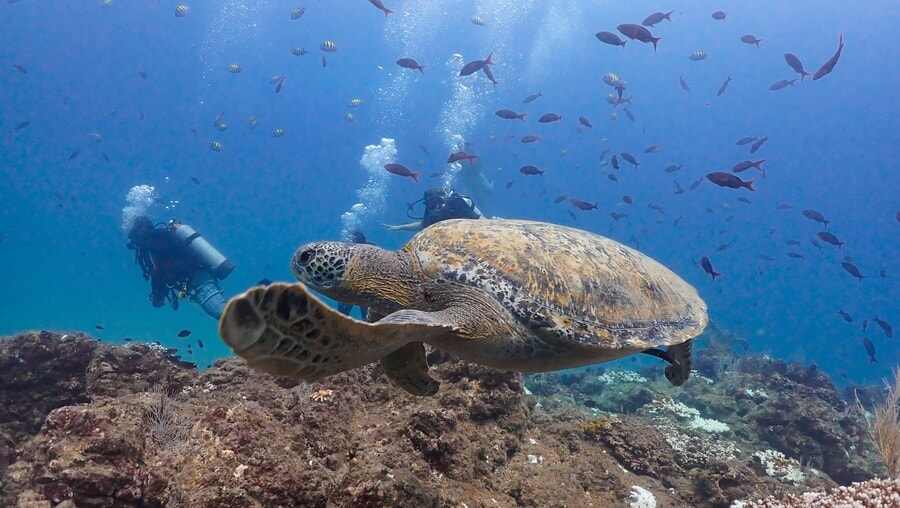
Diving in Manuel Antonio National Park
That being said, the park is home to 12 small islands that offer plenty of exciting dive sites. Here you’ll discover volcanic rock formations like caverns and pinnacles, along with a wonderful mix of hard and soft corals. It’s easy to spot schools of snapper and horse mackerel, plus whitetip reef sharks, angelfish, Moorish idols, parrotfish, puffers, octopuses, eels, all kind of crustaceans, and sea turtles.
Diving here is possible with just an Open Water certification, although you might encounter mild currents depending on the site and time of year.
- Best time: December to April is the dry season, when the sea is calmer and visibility improves, although diving is possible year-round.
- Visibility: Around 10 to 100 feet.
- Water temperature: Between 80°F and 85°F.
- Difficulty: Easy to moderate. A good choice for beginners since most dives are shallow and usually free of strong currents.
- Depth: Between 10 and 70 feet, perfect for recreational divers and those taking courses.
- Common species: Sea turtles, whitetip reef sharks, octopuses, tropical fish, lobsters, moray eels, rays, nudibranchs, and, of course, starfish.
Diving in Tortuga Island, Costa Rica
Tortuga Island is another beautiful dive site in Costa Rica and one of the most popular ones. It’s located just off the southern Nicoya Peninsula and is so well-loved that even day tours for snorkeling depart all the way from the capital. But if your goal is to dive at the three shipwrecks resting near the island, the best option is to stay in Montezuma, where you’ll find dive centers offering specialized excursions.
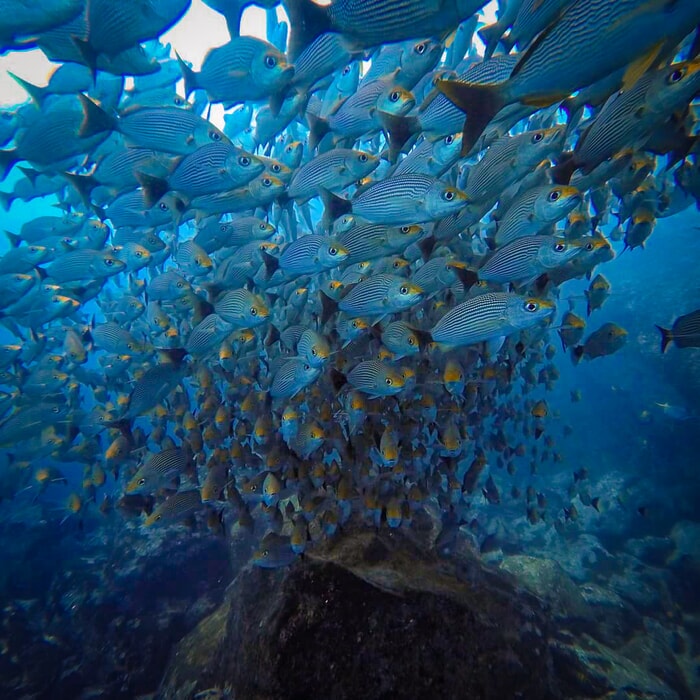
Diving in Tortuga Island, Costa Rica
Conditions around Tortuga Island are excellent for beginners, thanks to shallow depths and sites protected from strong currents. If you already have your Open Water Diver certification, you’ll be all set to explore.
- Best time: December to April, during the dry season, when the seas are calmer and visibility is generally better. That said, diving is possible all year long.
- Visibility: Between 25 and 100 feet.
- Water temperature: Ranges from 75°F to 85°F, though you may notice cooler patches due to thermoclines.
- Difficulty: Easy to moderate.
- Depth: 16 to 70 feet.
- Common species: Angelfish, butterflyfish, puffers, sea turtles, rays, moray eels, octopuses, lobsters, and large schools of colorful tropical fish.
Map of the best dive sites in Costa Rica
To give you a quick overview of the best places to scuba dive in Costa Rica, check out the map below.
As you’ll see, the Pacific side of Costa Rica clearly takes the crown when it comes to diving.
Earn your PADI Open Water in Costa Rica
If you haven’t yet earned your diving certification, don’t worry! You can get a certification from PADI in Costa Rica as well. All you need to do is take the PADI Open Water course here and gain the skills you need to dive safely. This entry-level certification allows you to dive up to 60 feet anywhere in the world, and the only requirement to enroll is that you know how to swim.
The course begins with theory lessons, where you’ll learn the essential concepts, followed by practice sessions in a pool or shallow water. During these sessions, you’ll work on techniques and safety skills to prepare for different underwater scenarios. Finally, you’ll move on to open water dives where you get to apply what you’ve learned and gain real experience in the ocean.
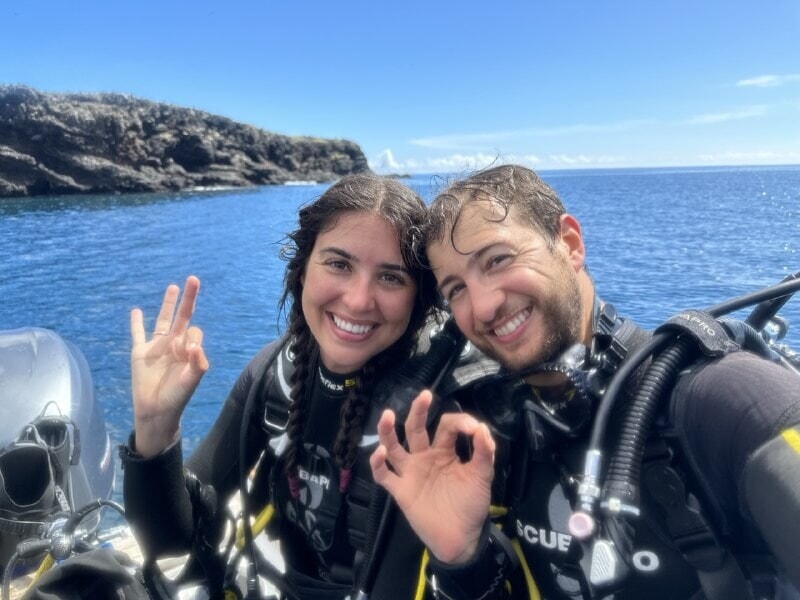
Earn your PADI Open Water in Costa Rica
The course usually takes 3 to 4 days and costs between $450 and $600, depending on the dive center and location. It generally includes all the equipment, course materials, dive sessions, and your certification at the end. Still, I recommend checking the details directly with the dive center so you know exactly what’s covered.
You can take this PADI OWD course in Tamarindo. While we already arrived in Costa Rica as certified divers, our friend Ana completed her Open Water training here and absolutely loved it. Tamarindo is also a great town to spend a few days in, with plenty of affordable and higher-end accommodations, plus lots to do once you’re done diving for the day.
If you already hold the Open Water certification, you can continue your training by taking the Advanced Open Water course, which qualifies you to dive deeper, explore wrecks, and even try night diving. Another highly recommended option is the NITROX course, which allows you to extend your bottom time and dive at sites that require enriched air, such as some around the Bat Islands and Cocos Island.
Diving in Costa Rica for non-certified divers
Even if you’re not planning on earning a certification, you can still experience scuba diving in Costa Rica. I actually recommend giving it a try if you’re unsure whether you’d enjoy diving enough to commit to a full course. It’s a fun and low-pressure way to test the waters, quite literally.
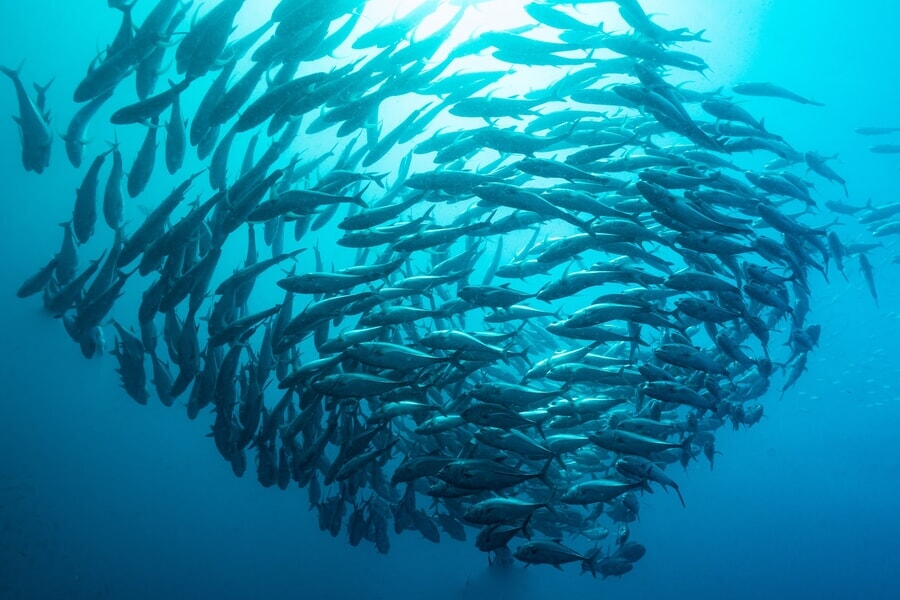
Diving in Costa Rica for non-certified divers
The option available is called Discover Scuba Diving. This program doesn’t require a license, and you’ll start by learning a few basic skills before heading straight into the ocean with an instructor. The dives are limited to a maximum depth of 40 feet, but it’s more than enough to get a feel for the experience and see plenty of marine life.
In the Gulf of Papagayo, you can join this beginner-friendly diving tour that departs from Playa del Coco. The Catalina Islands are another option, although they’re known for having stronger currents, so the Discover Scuba dives there are usually limited to calmer spots. This excursion departs from Tamarindo, but you can also do this Discover Scuba Diving program from Playa Flamingo.
Best time to dive in Costa Rica
If you’re wondering when the best time is to visit Costa Rica, here’s some good news: diving is possible all year round! Of course, the exact conditions you’ll experience depend a lot on the season and even on the region of the country you’re visiting.
Costa Rica’s climate is divided into two main seasons. From May to November, you’ll encounter the wet season, while December to April marks the dry season. In most areas, the dry season is the most favorable time to dive, since the seas are calmer and visibility tends to be much better. However, in the North Pacific regions like the Catalina Islands, the Bat Islands (Murciélago), and the Gulf of Papagayo, the famous Papagayo winds pick up during these months, creating strong currents that make dives more demanding.
So, depending on what you’re hoping to see and what kind of diving experience you want, certain times of year are more suitable than others for exploring Costa Rica’s underwater world.
May to November: the wet season
From May to November, Costa Rica enters its wet season. This period is considered the prime time to witness enormous schools of hammerhead sharks around Cocos Island. The trade-off is that currents are stronger and visibility is lower than at other times of year, but this is exactly when the ocean’s big pelagic species are most likely to appear.
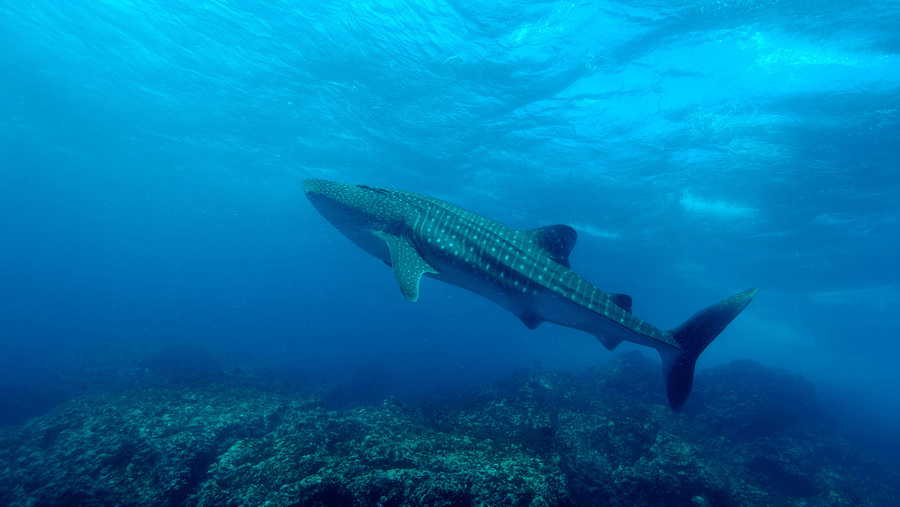
May to November: the wet season
In the South Pacific areas, such as Caño Island or Manuel Antonio, conditions are also marked by stronger currents and reduced visibility. Even so, I wouldn’t call it a bad time for diving at all, because it overlaps with humpback whale season, which lasts from July through October. If you’re lucky, you might even hear their haunting songs underwater during your dive.
Meanwhile, in the North Pacific, the Papagayo winds calm down during these months. It’s true that the chances of spotting oceanic manta rays around the Catalina Islands are lower at this time, but on the other hand, this is the ideal season for diving in the Bat Islands. From June to October, navigation is safer, and specialized bull shark expeditions take place.
From December to April: dry season
If you’re a beginner diver, the dry season from December to April is definitely the best period to plan your trip. During these months, the South Pacific enjoys calm seas, light currents, and very good visibility. With less rainfall and fewer waves, diving conditions are perfect for recreational dives, learning new skills, or completing entry-level courses.
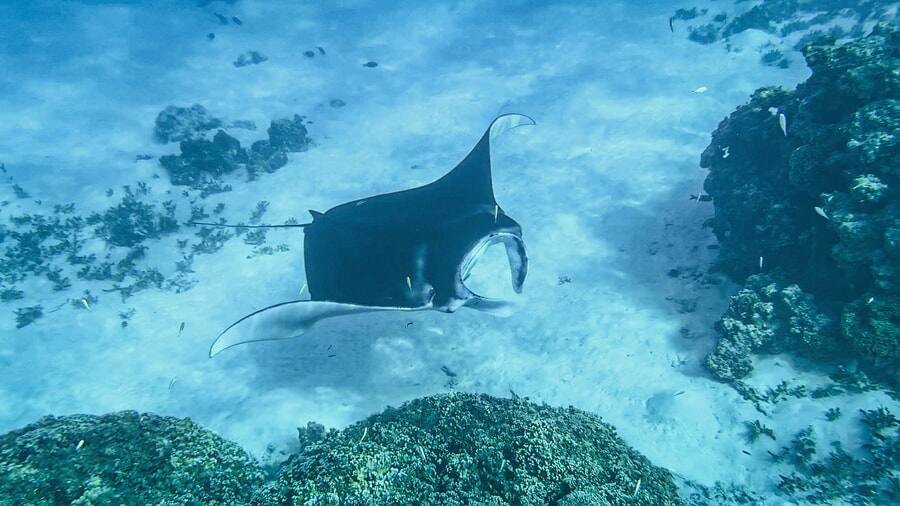
From December to April: dry season
The North Pacific, however, tells a different story. The strong Papagayo winds dominate this area during the dry season. On the bright side, this period is the absolute best for spotting Pacific oceanic manta rays in the Catalina Islands, particularly from January through March. The downside is that bull shark tours to the Bat Islands stop altogether during this season, as the sea conditions become too rough and unsafe for those dives.
Additional tips for diving in Costa Rica
To make the most of your diving in Costa Rica, here are a few final tips to keep in mind:
- Choose carefully where and when to dive: Every dive site in Costa Rica offers something different, and conditions vary by season. Think about what you most want to see before locking in your travel dates. For example, the best time to encounter certain species doesn’t always overlap with the months that have the calmest seas, so balance your expectations with what each season has to offer.
- Be honest about your skill level: Some dive sites in Costa Rica have strong currents or more complex conditions. It’s important not to underestimate them. Instead of pushing your limits, choose dives where you feel confident and safe, so you can truly enjoy the experience without taking unnecessary risks.
- Respect the ecosystems: The underwater habitats in Costa Rica are among the most delicate and precious in the world. Practice good buoyancy, avoid touching corals, and never disturb marine animals. Preserving these sites is key so that other divers, now and in the future, can enjoy them just as you do.
- Have the right insurance: Dive operators will ask for valid dive insurance. On top of that, I recommend having a reliable travel insurance policy for Costa Rica. Make sure it includes diving-related details such as hyperbaric chamber treatments or medical evacuation coverage, just in case.
- Book ahead: Some popular dive sites in Costa Rica have daily limits on how many visitors can enter. To avoid disappointment, reserve your dives in advance and secure your spot.
Best snorkeling spots in Costa Rica
Don’t worry if you haven’t worked up the courage to strap on a tank yet. Snorkeling in Costa Rica is truly incredible, and in many spots, you can already see colorful corals, tropical fish, turtles, rays, and much more while staying in shallow, easy-to-reach waters.
Some of the best beaches in Costa Rica for snorkeling on your own include:
- Conchal Beach (Guanacaste): Famous for its turquoise waters and excellent visibility. The best place to snorkel is the rocky section on the eastern side, right where it borders Playa Brasilito.
- Biesanz Beach (near Manuel Antonio National Park): A small, sheltered bay with calm waves where you can admire coral formations and lots of fish. It’s a peaceful spot that’s perfect for beginners.
- Ocotal Beach: With calm and clear waters, this beach is ideal for snorkeling. Both ends of the shoreline are especially good places to explore.
- Dantita Beach: A quiet little beach with rocky bottoms close to the coast, where schools of tropical fish gather.
- Punta Uva (South Caribbean): A paradise-like beach with clear waters and lush vegetation. Both on land and in the water, the biodiversity here is breathtaking. It’s one of the best places for snorkeling and diving on the Caribbean side of Costa Rica.
- Manzanillo Beach: Located right next to Punta Uva, this beach has coral reefs directly in front of the town and also around the rock formations along the coast.
If you’re open to joining a tour when the location is worth it, there are some great excursions to consider.
For snorkeling around the Catalina Islands, you can join this tour leaving from Tamarindo or this tour departing from Playa Flamingo. To explore the waters of Caño Island, you can either choose this excursion from Uvita or this one from Drake Bay.
Tortuga Island is another classic. It’s so popular that tours to its beaches depart from nearly every region of Costa Rica. You can book this excursion from Monteverde, Arenal, La Fortuna, or Manuel Antonio. If you’re already in the southern Nicoya Peninsula, the easiest and most affordable option is this 5-hour tour from Playa Los Órganos, located south of Paquera.
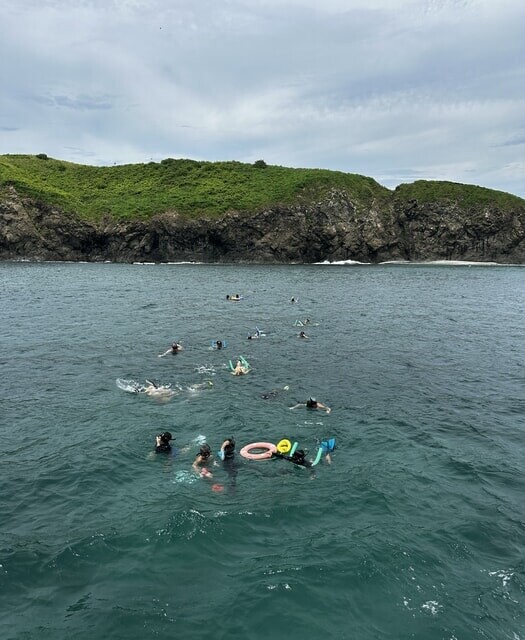
Best snorkeling spots in Costa Rica
You can also take this tour from Puntarenas, where the boat makes a short stop at Negritos Island to spot spider monkeys, or this excursion from Jacó, which includes hotel pickup. If you’re based in San José, you can join this full-day trip directly from the capital that takes you out to Tortuga Island for snorkeling.
Still, my favorite snorkeling in Costa Rica took place in Cahuita National Park, home to the country’s largest coral reef. Snorkeling there is a must, but keep in mind that it’s only possible with a guided tour like this excursion, since swimming on your own is not allowed inside the protected area.
And that wraps up my guide to diving in Costa Rica. If you have questions or if you’ve already had the chance to dive or snorkel here and want to share your experience, leave a comment below. I’d love to hear about your adventures.
Pura Vida!
